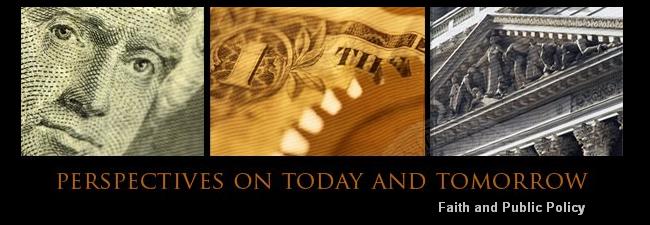“The currently observed turmoil in financial markets, which is believed to have been ignited by the collapse of the subprime mortgage market, has recently brought to prominence the ideas of Hyman Minsky, a prominent member of the post-Keynesian school of economics. Many commentators are of the view that Minsky's framework of thinking accurately anticipated the current financial crisis.
While most mainstream economists are of the view that economic busts are the outcome of various external shocks to the economy, Minsky held that, even in the absence of such shocks, the capitalistic economy has an inherent tendency to develop instability, which culminates in severe economic crises. The key mechanism that pushes the economy towards a crisis is the accumulation of debt. Here is why.
During "good" times, businesses in profitable areas of the economy are handsomely rewarded for raising their level of debt. In short, the more one borrows, the more profit one seems to make. The rising profit attracts other entrepreneurs to join in and encourages them to raise their level of debt. Since the economy is doing well and borrowers' financial health shows visible improvement, this makes lenders more eager to lend. As time goes by, the pace of debt accumulation starts to rise much faster than borrowers' ability to repay and serve the debt. It is at this stage that the foundation for an economic bust is set in motion.
…
According to Minsky, the financial structure of a capitalist economy becomes more and more fragile during the period of prosperity. In short, the longer the prosperity, the more fragile the system becomes.
…Minsky dubbed [his ideas] the "Financial Instability Hypothesis" (FIH).
Another aspect of the FIH is that, during good times, banks and other intermediaries strive to innovate with regard to the assets they acquire and the liabilities they market. This means that, during good times, financial intermediaries (Minsky labeled them as "merchants of debts") try to lure investors to buy the debt by means of sophisticated innovations. The chase for making more profits causes players in financial markets to place their money in various investments that have very little substance — such as subprime-mortgage-backed securities. What makes these investments attractive is sophisticated packaging and the relatively high rate of return.
But, once economic conditions change, the true state of many borrowers comes to the surface and leads to a crisis. Lenders curtail their supply of funds and borrowers are pushed to bankruptcy, for they cannot renew their borrowing to pay debts — a financial crisis emerges.”
Frank Shostak, “Does the Current Financial Crisis Vindicate the Economics of Hyman Minsky?” , Post on the Ludwig von Mises Institute web site (27 November 2007).
http://mises.org/story/2787#
Frank Shostak is an adjunct scholar of the Mises Institute and a frequent contributor to Mises.org. He is chief economist of M.F. Global.
Hyman Minsky (1919–1996) was an American economist who earned a Ph.D. from Harvard and taught at Brown, Berkeley, and Washington University in St. Louis. He worked for the last six years of his life at the Levy Economics Institute of Bard College.
While at Harvard, Minsky studied under Joseph Schumpeter and drew on insights acquired from Schumpeter in an effort to explore the long-term development of capitalism, especially the way in which credit cycles affect economic growth. Charles Kindleberger, a professor of economic history at the Massachusetts Institute of Technology who studied Minsky’s ideas on credit cycles, described Minsky as "a man with a reputation among monetary theorists for being particularly pessimistic, even lugubrious, in his emphasis on the fragility of the monetary system and its propensity to disaster."
Rather than seeing a Capitalist economy as inherently stable and tended toward full employment of the labor force and steady economic growth, as Classical economists did, Minsky felt that the operation of product and factor markets alone could not produce prosperity, and stressed the importance of a financial theory of investment driven by credit cycles and involving assets bubbles. When times are good, investors borrow excessively and take on risks, driving up asset prices far higher than their inherent value. The longer the period of prosperity the more their risk aversion weakens and the more risks they take on. At some point a “Minsky moment” is reached where the cash generated by their activities and risky assets is not longer sufficient to cover payments on their debts. The over-indebted investors then begin to sell their assets -- even their solid investments -- and a cascading and deep decline occurs in asset prices across many financial markets that cannot be arrested by the central bank. Indeed, before the decline sets in the central bank is forced to deal with a strong demand for cash as people more from assets to cash in an attempt to keep the economy afloat. As the boom goes on the pressures of impending financial doom weaken financial accounting standards in the non-financial sector. As the speculative bubble becomes clear banks and lenders tighten credit, even to businesses in sound financial shape. A downturn, perhaps even a recession or depression, sets in.
In the minds of many we reached a Minsky moment last year and the Fed and the Treasury are now struggling with the problems of an increasingly troubled financial sector.
Hyman Minsky’s work on the relationship between Capitalist development and financial crises points out the very real possibility that financial market fragility is a normal part of a free market Capitalist economy. Schumpeter would agree, but would add that the fragility is an inevitable part of the grand process by which Capitalism generates rapid growth and raises levels of living, and nothing should be done to “tame” financial markets. On this, Minsky would not agree, feeling that proper policy could control the credit cycle and contribute to a more stable economy.



No comments:
Post a Comment